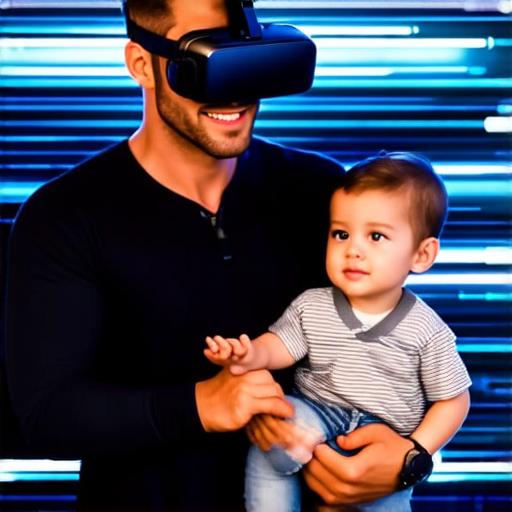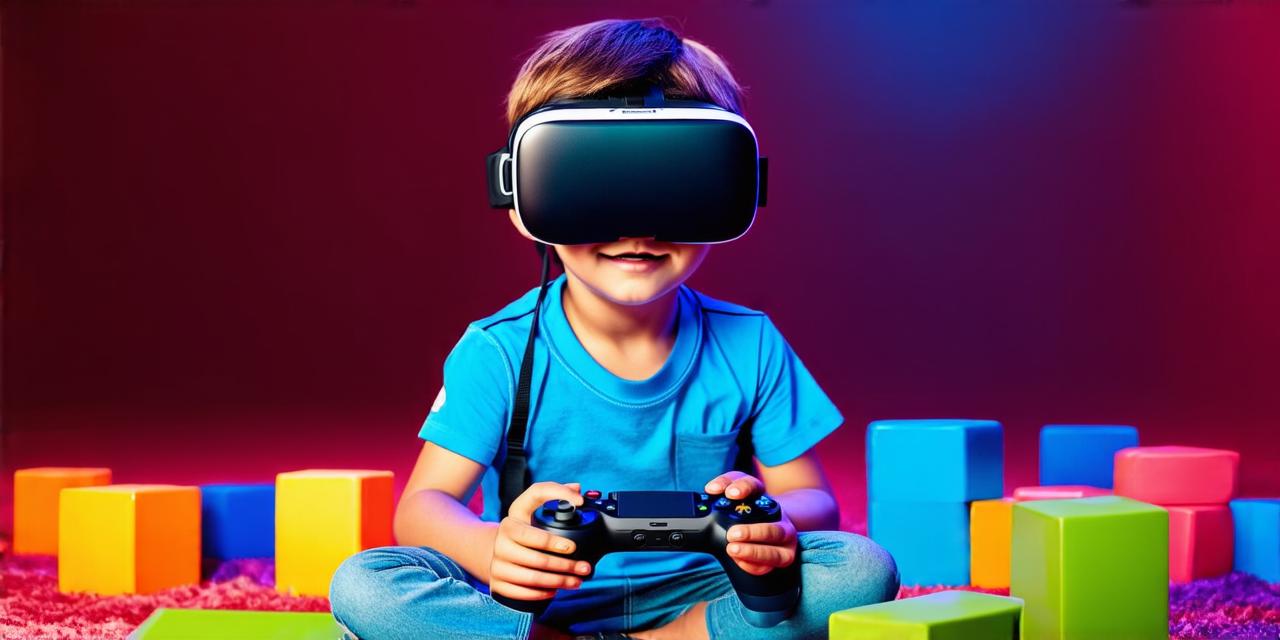Virtual reality (VR) is becoming increasingly popular as a form of entertainment and education. From gaming to immersive experiences in museums and historical sites, VR has the potential to be an incredibly valuable tool for children. However, like any technology, it also comes with risks that need to be carefully considered.
What is Virtual Reality?
Virtual reality is a computer-generated simulation that creates an immersive experience for the user. It typically involves wearing a headset or other device that tracks the user’s movements and adjusts the environment accordingly. This allows the user to feel like they are in a completely different world, with different sights, sounds, and sensations.
Risks Associated with VR Use by Children
1. Eye Strain and Discomfort
One of the most common complaints from children using VR is eye strain and discomfort. The constant focus on a virtual environment can lead to dry eyes, headaches, and even blurred vision. To mitigate this risk, it’s important to ensure that children take regular breaks from VR use and follow proper eye care practices, such as blinking frequently and taking time to rest their eyes.
2. Motion Sickness
Motion sickness is another common issue associated with VR use. It can be caused by the disconnect between what a person sees in real life and what they see in the virtual environment. To reduce the risk of motion sickness, it’s important to choose VR experiences that are appropriate for a child’s age and ability, as well as providing a comfortable seating area with enough space for movement.
3. Addiction and Isolation
Virtual reality can be incredibly engaging and immersive, leading to the risk of addiction and isolation from real-life social interactions. It’s important to set limits on VR use and encourage children to spend time with friends and family outside of virtual environments.
4. Fear and Anxiety
Some VR experiences can be quite frightening or intense, leading to fear and anxiety in children. Parents should carefully choose VR experiences that are appropriate for their child’s age and ability, as well as being mindful of the content within those experiences. Additionally, parents should ensure that their child has access to support and resources if they experience any negative emotions or reactions while using VR.
5. Physical Injuries
While rare, physical injuries can occur while using VR. This is typically caused by tripping or bumping into objects in the real world while wearing a headset. To reduce this risk, it’s important to ensure that children have enough space to move around safely and to supervise them while they use VR.
Mitigating Risks
1. Parental Controls
Parents should take an active role in controlling their child’s VR use by setting limits on the amount of time spent in virtual environments, as well as monitoring the content that their child is accessing. This can be achieved through parental controls on VR devices and platforms.
2. Guidelines for Use
It’s important to establish guidelines for VR use by children, including regular breaks, appropriate content, and a safe environment for movement. Parents should also encourage their children to spend time with friends and family outside of virtual environments.
3. Education and Awareness
Education and awareness campaigns can help parents and children better understand the risks associated with VR use. These campaigns can include information on eye care, motion sickness prevention, and healthy social interactions.
4. Regular Check-ups
Regular check-ups with a healthcare professional can help identify any negative effects that VR use may have on a child’s physical or mental health. This can include regular eye examinations and assessments for anxiety or depression.
5. Regulatory Oversight
Regulatory oversight of VR devices and platforms can ensure that they are safe and appropriate for use by children. This includes guidelines for content, as well as requirements for parental controls and age restrictions.
Case Studies
1. A 9-year-old boy was found to have dry eyes and blurred vision after spending several hours using a VR headset. His parents were able to address this by encouraging him to take regular breaks from VR use and follow proper eye care practices.
2. A 14-year-old girl experienced motion sickness while using a VR device. Her parents were able to reduce the risk by choosing VR experiences that were appropriate for her age and ability, as well as providing a comfortable seating area with enough space for movement.
3. A 7-year-old boy became isolated from his friends and family after spending several hours using a VR device. His parents were able to address this by setting limits on his VR use and encouraging him to spend time with friends and family outside of virtual environments.
4. A 12-year-old girl experienced intense fear and anxiety while using a VR device. Her parents were able to address this by carefully monitoring the content that she was accessing and providing her with support and resources as needed.
5. A 10-year-old boy tripped and fell while wearing a VR headset, resulting in a minor injury. His parents were able to address this by ensuring that he had enough space to move around safely and supervising him while he used the device.

Conclusion
Virtual reality has the potential to be an incredibly valuable tool for children, but it also comes with risks that need to be carefully considered. By understanding these risks and taking steps to mitigate them, parents can help ensure that their children have a positive and safe experience with VR technology. It’s important to remember that virtual reality is just one aspect of a child’s life, and that healthy social interactions and regular breaks from technology are essential for overall well-being.
FAQs
1. What are some of the common risks associated with VR use by children?
Eye strain and discomfort, motion sickness, addiction and isolation, fear and anxiety, physical injuries.
1. How can parents mitigate these risks?
Parental controls, guidelines for use, education and awareness campaigns, regular check-ups with a healthcare professional, regulatory oversight of VR devices and platforms.
1. What are some best practices for using VR technology safely?
Setting limits on the amount of time spent in virtual environments, choosing appropriate content for a child’s age and ability, providing a comfortable seating area with enough space for movement, encouraging regular breaks from VR use, monitoring a child’s content access while using VR technology.
